Leather saddle
Contents
Leather saddle
There are different areas where leather is used for saddles but the horse saddle is the best known. However, motorbike and bicycle seats are also called saddles. The term "saddle leather" is used for various types of leather and not exclusively for leather that is used for saddles. Leathers processed for saddles are usually solid bovine leather which withstand the heavy load.
Horse saddle
The history of horse leather saddles
The history of leather saddles dates back to ancient times and is closely intertwined with the development of riding and the use of horses as a means of transportation. In the earliest days of riding, no saddles were used. Instead, riders sat directly on the horse's back or used animal hides as padding. However, this was uncomfortable and provided little stability, especially during longer journeys or in combat. The breakthrough in the development of leather saddles came with the use of saddle trees. Saddle trees are the sturdy frameworks beneath the leather that give the saddle its shape and stability. The use of saddle trees allowed for even weight distribution and significantly improved the rider's balance on the horse's back. Modern leather saddles nowadays are made from high-quality leather and feature advanced cushioning systems.
Horse saddles have been around for centuries.
Why is leather used for saddles?
Leather is and was the preferred material for riding saddles. What are the reasons for that?
- Durability: Leather is a robust and durable material. It can withstand the demands that arise during riding, including the weight of the rider and the movements of the horse. The material is resistant to abrasion, tears, and other damages.
- Comfort: Leather provides a certain amount of cushioning and flexibility, protecting the rider from uneven surfaces and improving seating comfort. Due to its natural elasticity, leather also molds to the rider's body contours, offering a comfortable fit.
- Grip: Leather has a natural grip that helps the rider maintain a stable and secure position in the saddle. The slightly rough surface caused by the grain structure of the leather prevents slipping and allows the rider to establish a better connection with the horse.
- Breathability: Leather is a breathable material that wicks moisture away from the rider's skin and allows for good air circulation. This helps reduce sweating and overheating of the horse's back, promoting the horse's well-being.
Horse saddle - Leather saddles
Horse saddles and the bridle are mostly made of leather.
Horse saddles in the Pantanal in Brazil. Saddles often have coloured sheep skins.
Horse saddle in Praia do Forte in Brazil and on the island "Isla del Sol" in Lake Titicaca in Bolivia.
Saddle maintenance - Saddle Soap
Care requirements for a saddle vary with the intensity of its use. Saddles are subjected to mechanical stress as well as to the action of sweat, skin fats and general soiling. Therefore, a saddle should be wiped off after each ride with a damp, not too wet cloth. Weekly (or after about five rides) a more thorough cleaning and care treatment should follow. Soiled and uncared for saddles not only look unattractive, but also tend to dehydrate and crack (which can also become a safety issue, for example, in the event that stirrup loops begin to tear).
The ideal storage conditions for saddles are dry rooms with a slightly lowered room temperature, especially when saddles have become wet during riding in the rain. To avoid mould contamination, the humidity should not be too high. It is not necessary to dry the wet saddle with a heater, as this might provoke drying out and shrinkage. It is better to allow the saddle to dry slowly by itself.
American western saddle, saddle knob made of parchment with typical carving.
Video About horse saddles
The production of a saddle in the saddlery.
Bicycle saddle
Bicycle saddles made of leather are usually made of thick, firm smooth leather. Such leathers are stable and sturdy.
The use of leather for bicycle saddles dates back to the early days of cycling in the late 19th century. At that time, bicycle saddles were made out of leather as they offered good durability and flexibility. Leather is a natural material that adapts well to the body and develops an individual fit over time. This aspect has contributed to the popularity of leather saddles.
The saddle is formed during the manufacturing process and then stretched and bent using a special process. This allows the leather to adapt to the rider's anatomy and develop a unique shape over time.
Leather bicycle saddles are special. The company BROOKS is the best known brand.
Bicycle saddle made of leather with nice embossing and bicycle handles covered with leather strips.
Very exotic: Stingray leather on a bike saddle.
Beautiful individual bike saddles: shark leather and ostrich leather.
Beautiful individual bike saddles: crocodile leather and nubuck.
Very old: saddle from a high wheel of 1890.
Very curious: an old bicycle saddle made of pig leather.
Videos about leather bicycle saddle
The color refreshment of bicycle saddles with COLOURLOCK products.
Craftsmanship of leather bicycle saddles.
A new cover for a bicycle saddles (von www.gusti-leder.de).
Motorcycle saddles
In former times, the saddles of motorcycles were like those of bicycles. Today, motorcycle seats are rarely leather. Synthetic leather is more weather-resistant and therefore often the better choice.
Older motorcycle saddles.
Painted motorcycle saddle with braiding.
Motorcycle saddles carved and with braiding.
Logo embossed on a US motorcycle leather saddle.
Seat made of crocodile leather.
Harley of 1942 with saddle, saddlebag and rifle Scabbard.
Sheepskin saddle.
Very curious II: Scooter seat covered with pigskin made from leftover clothing.
Imitation leather is more weather-resistant.
Additional information







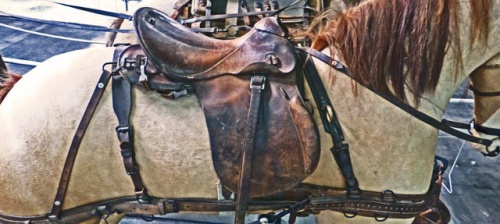

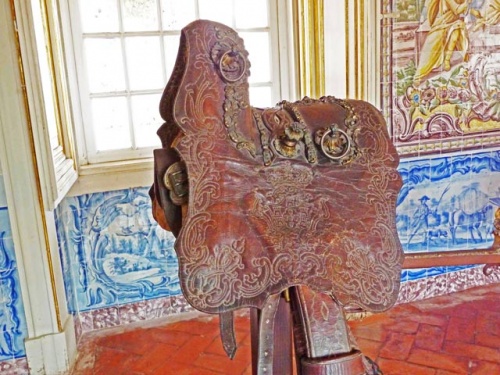
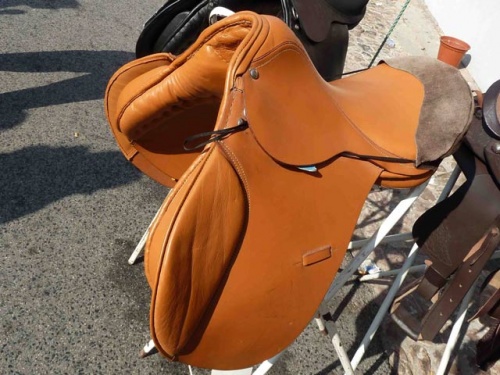
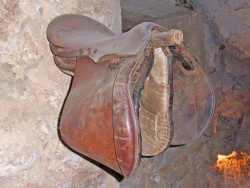
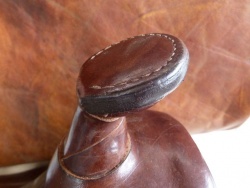
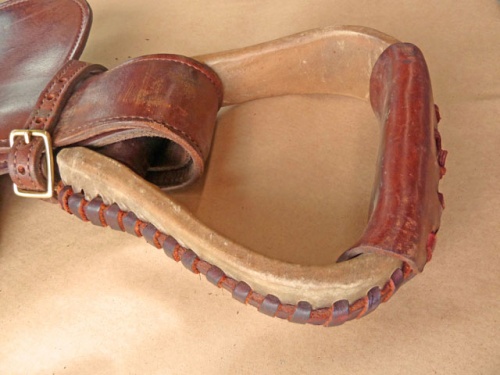
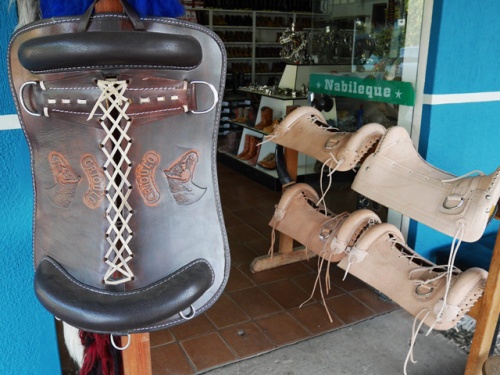
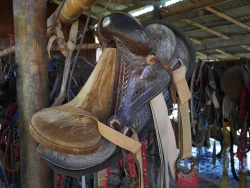
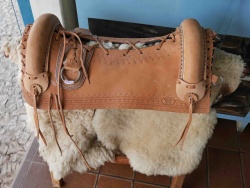
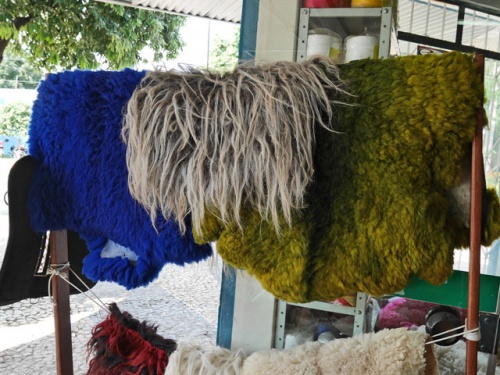
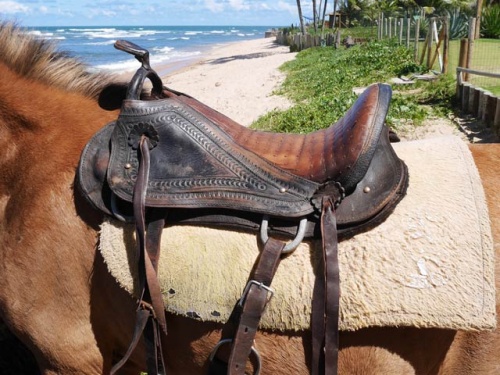

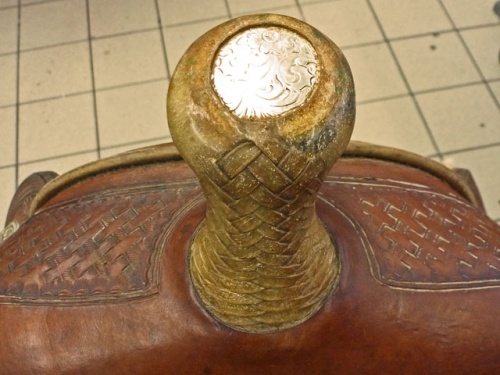
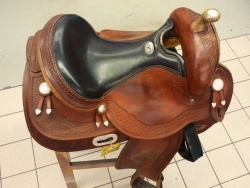
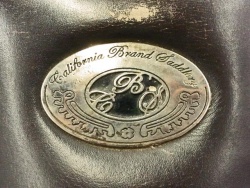
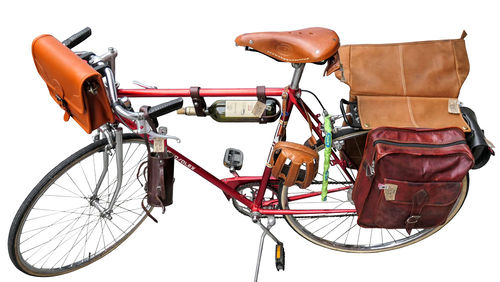

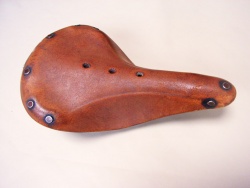
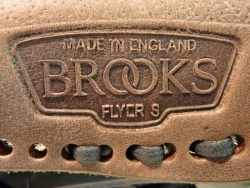
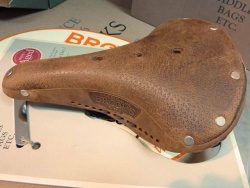
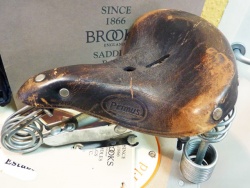
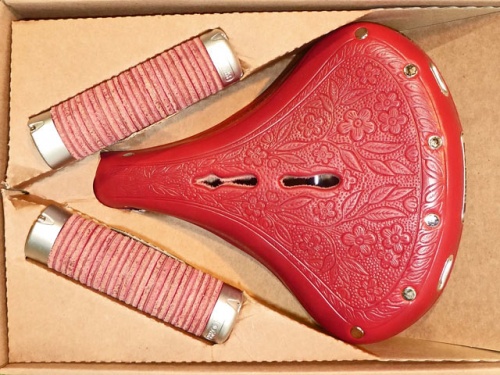
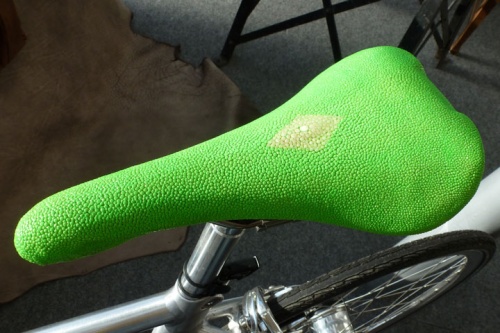
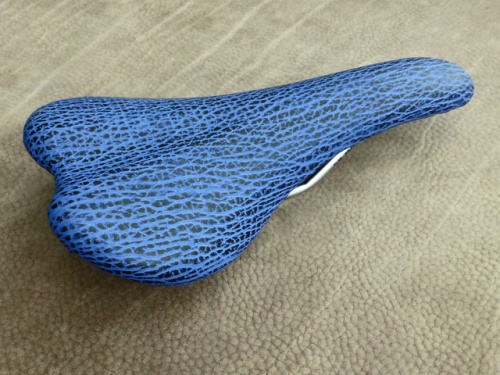
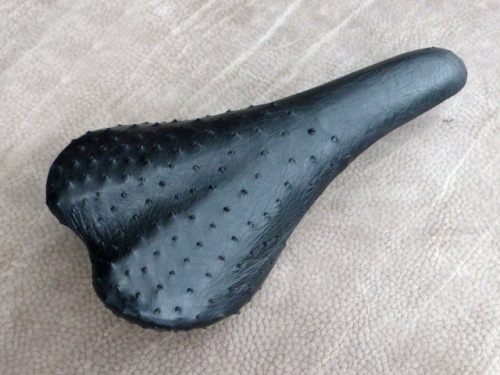

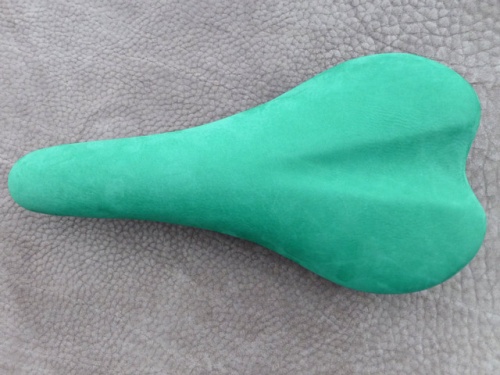

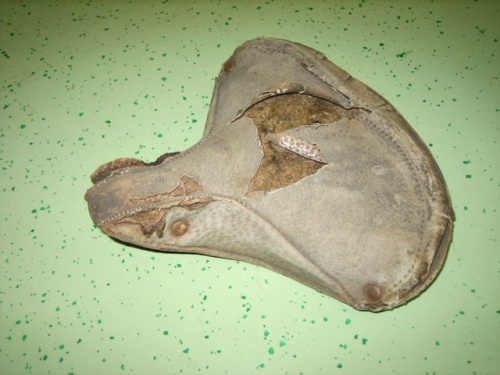
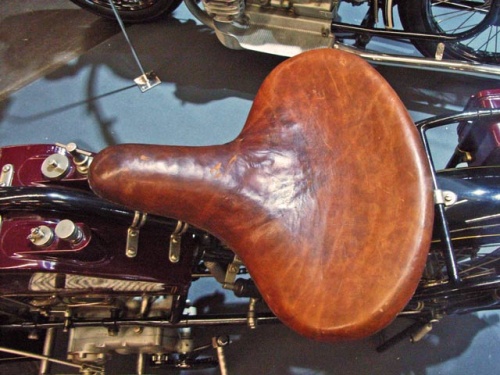
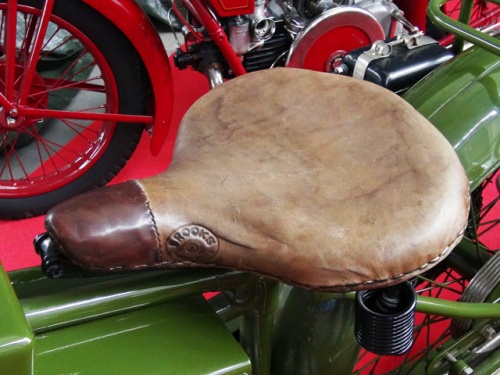
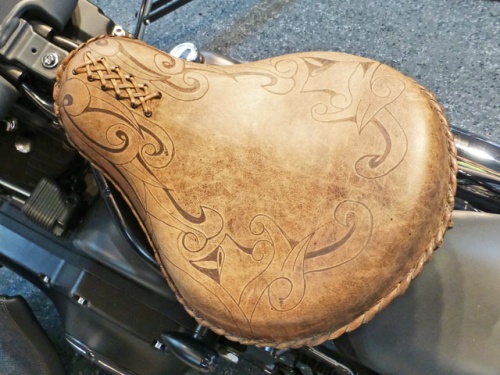

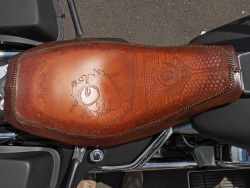
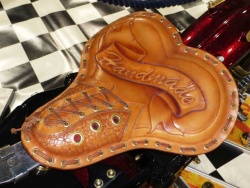
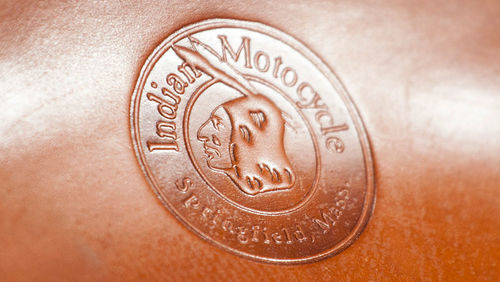
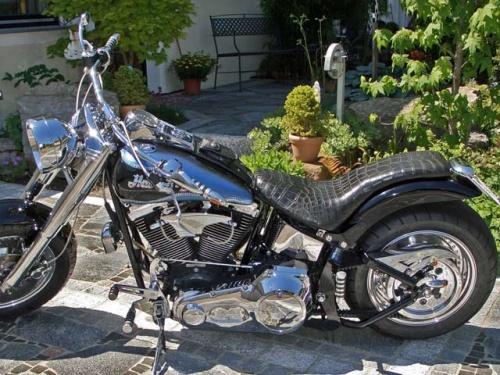
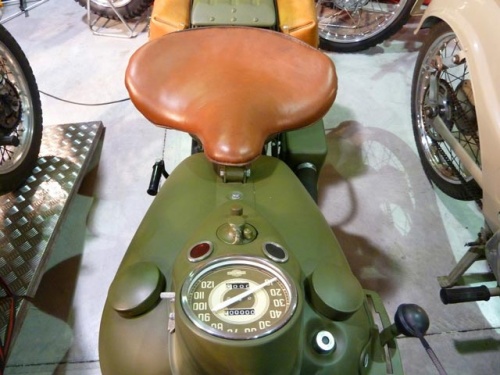
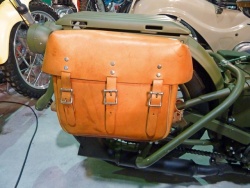
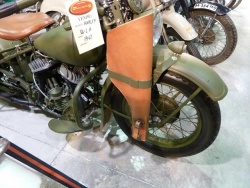
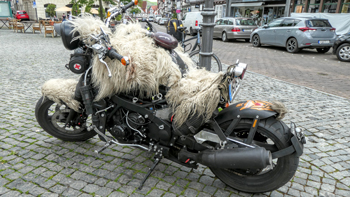
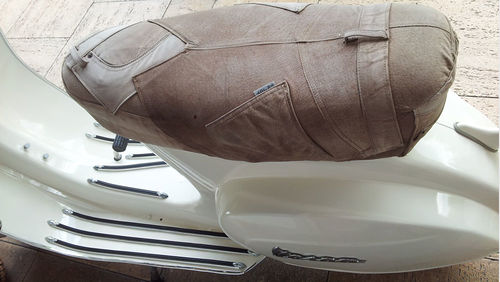
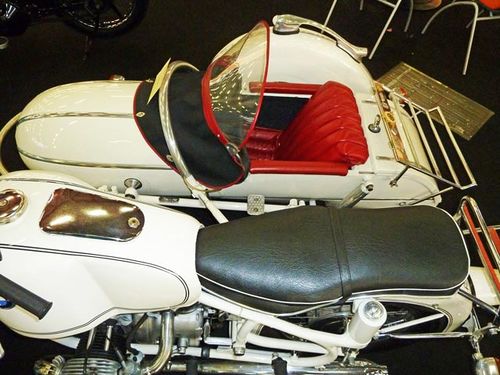
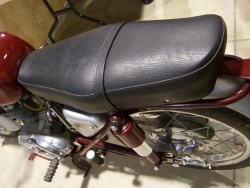
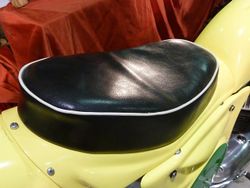

 a kotori web solution
a kotori web solution